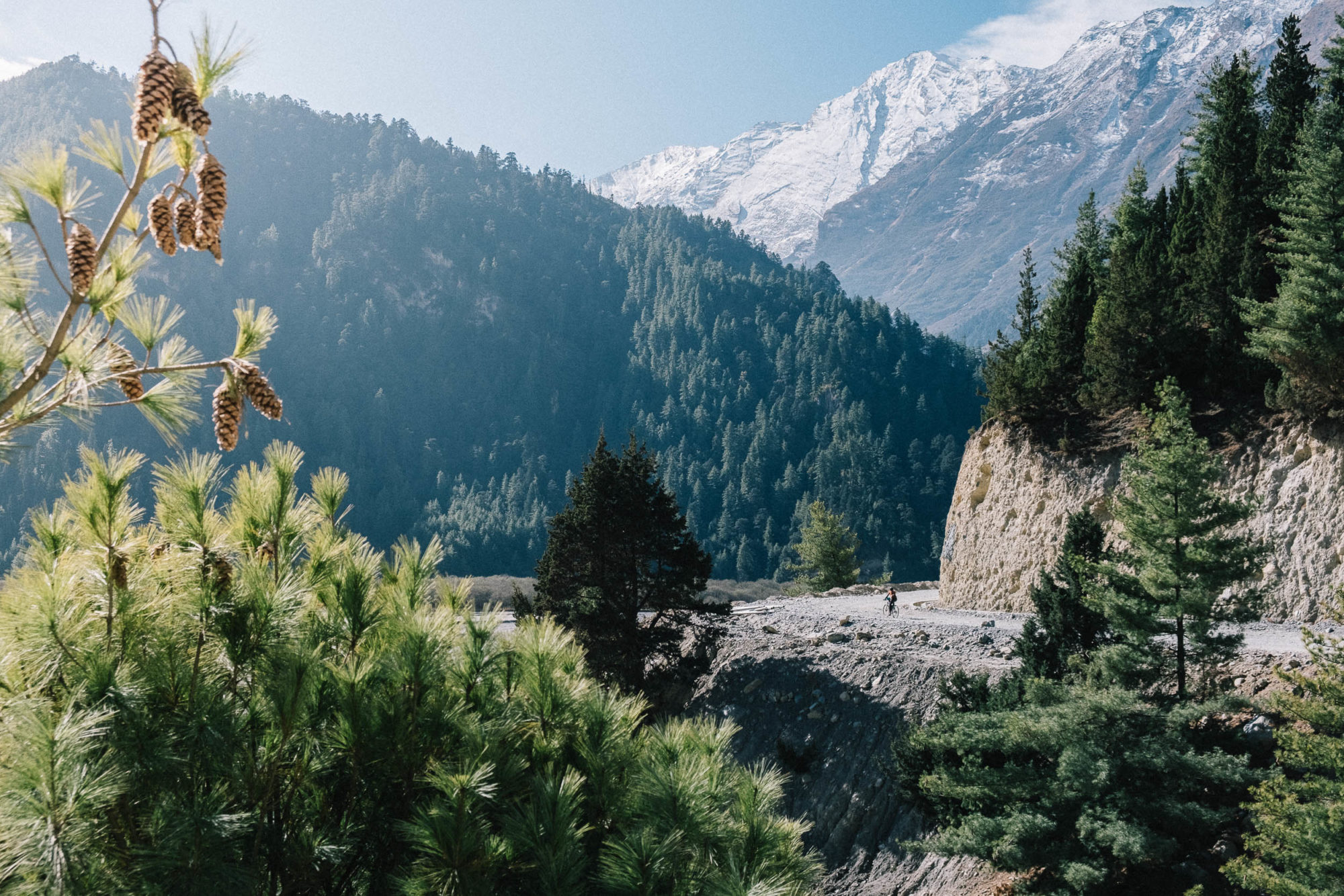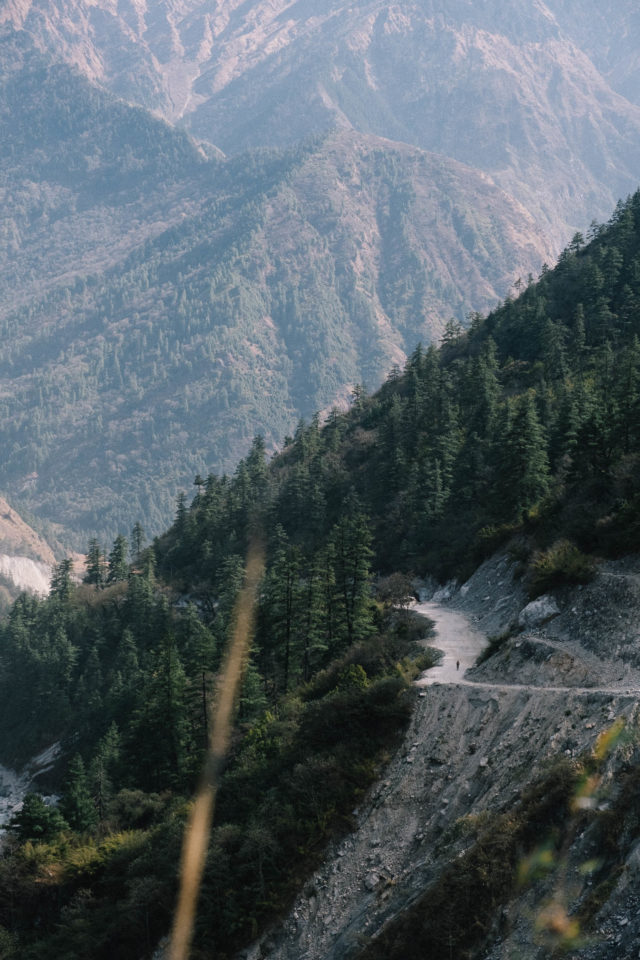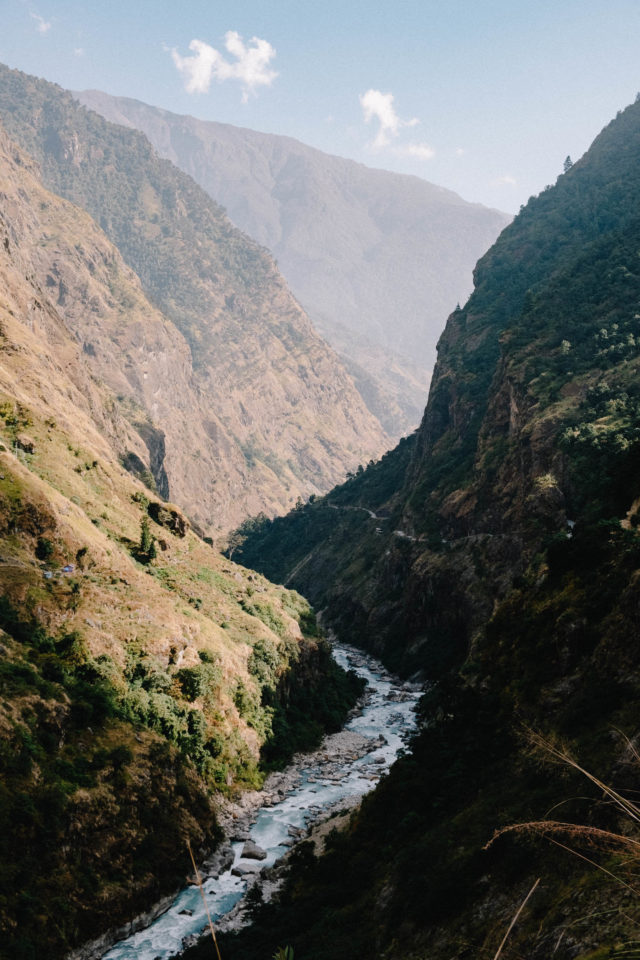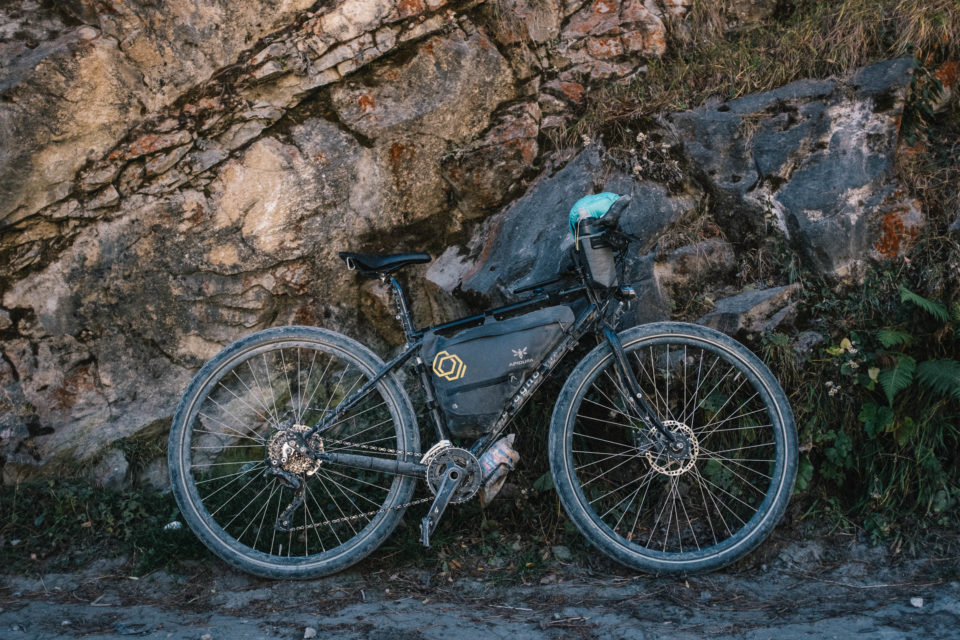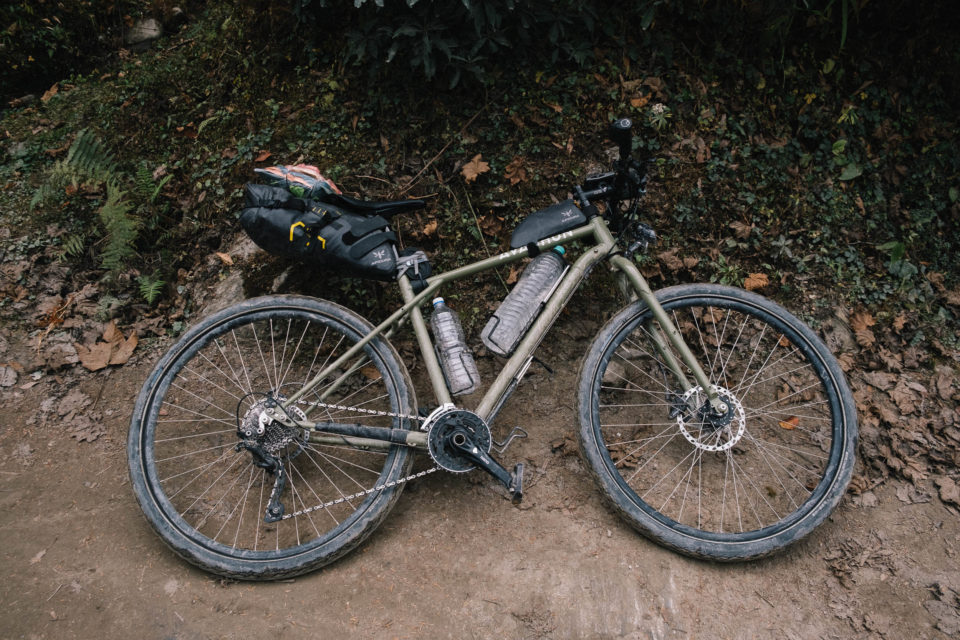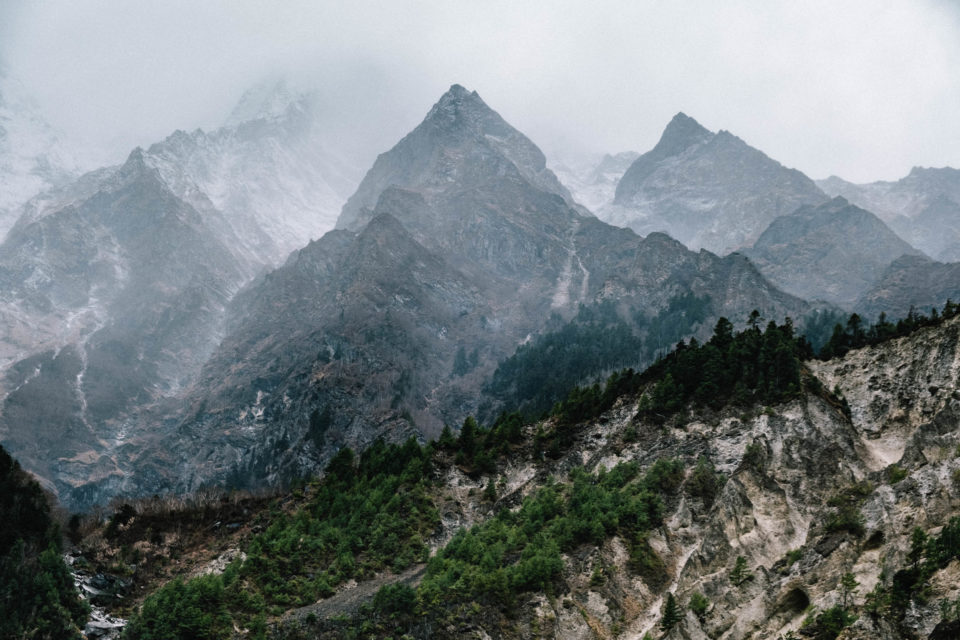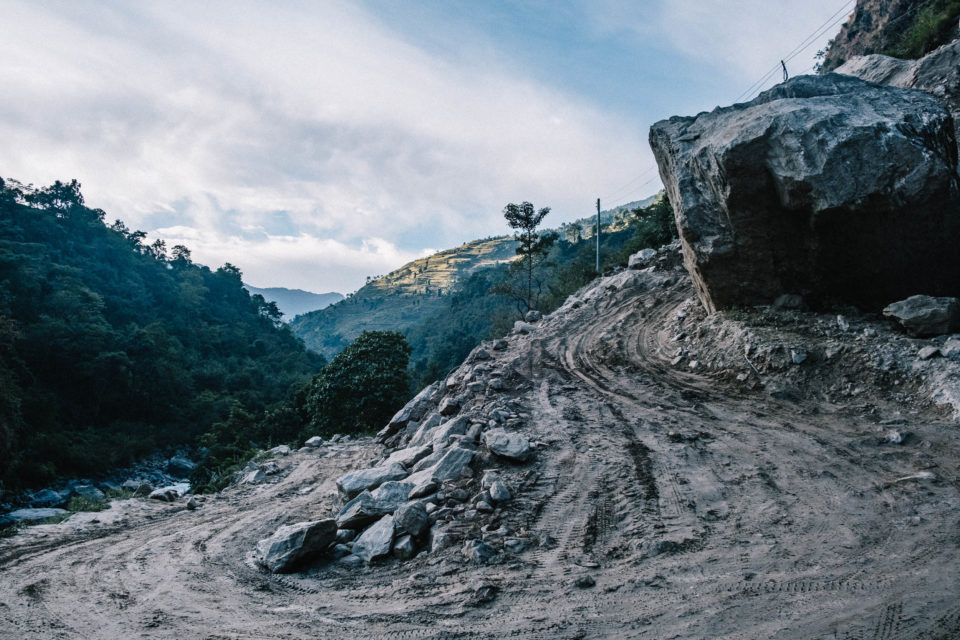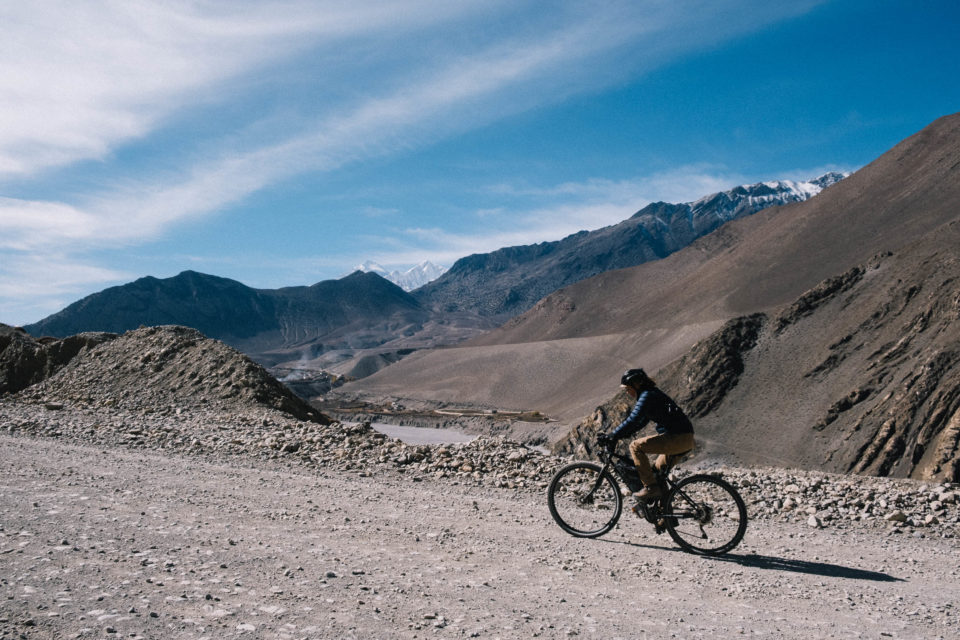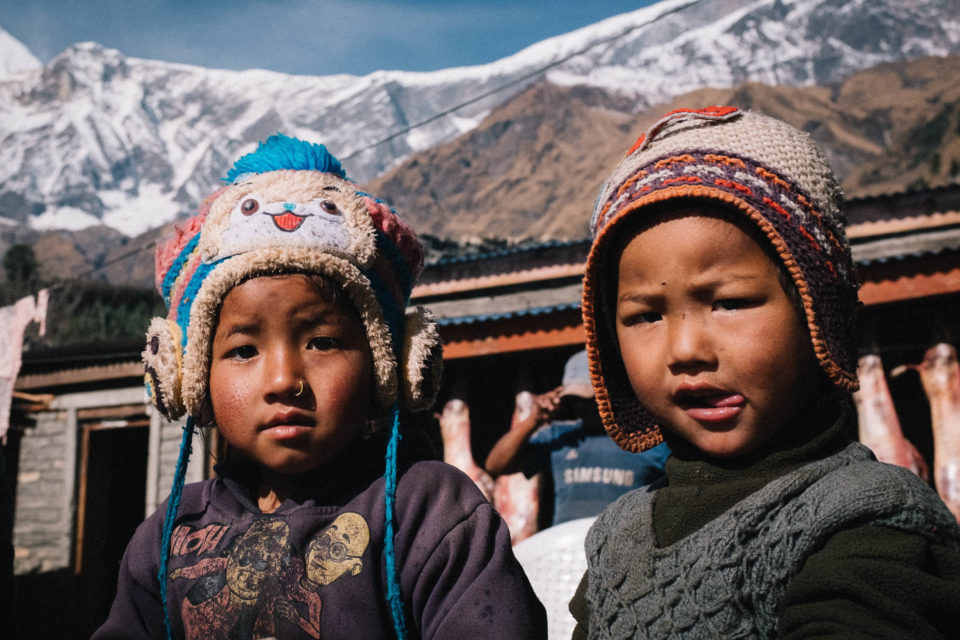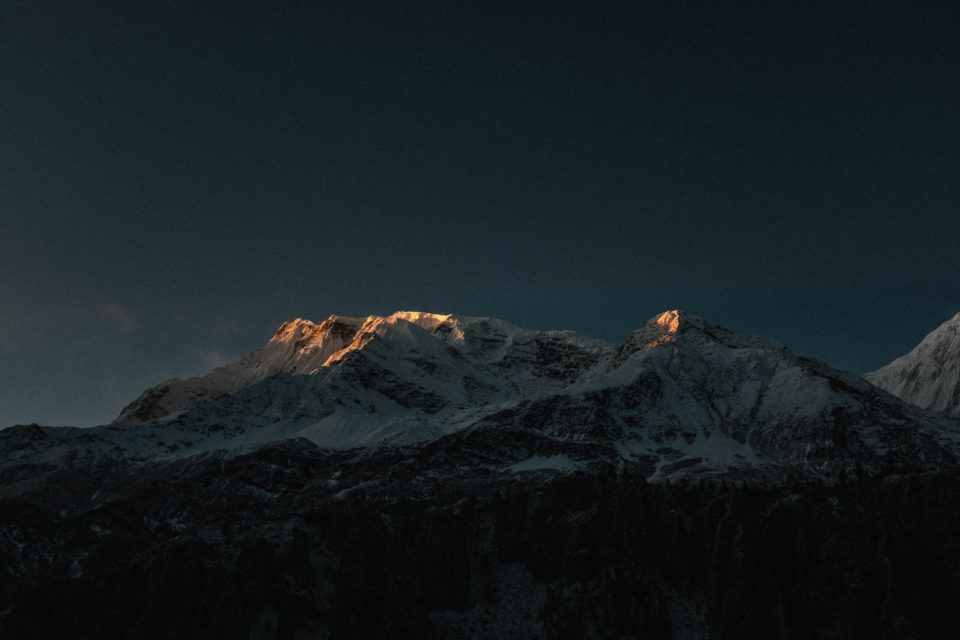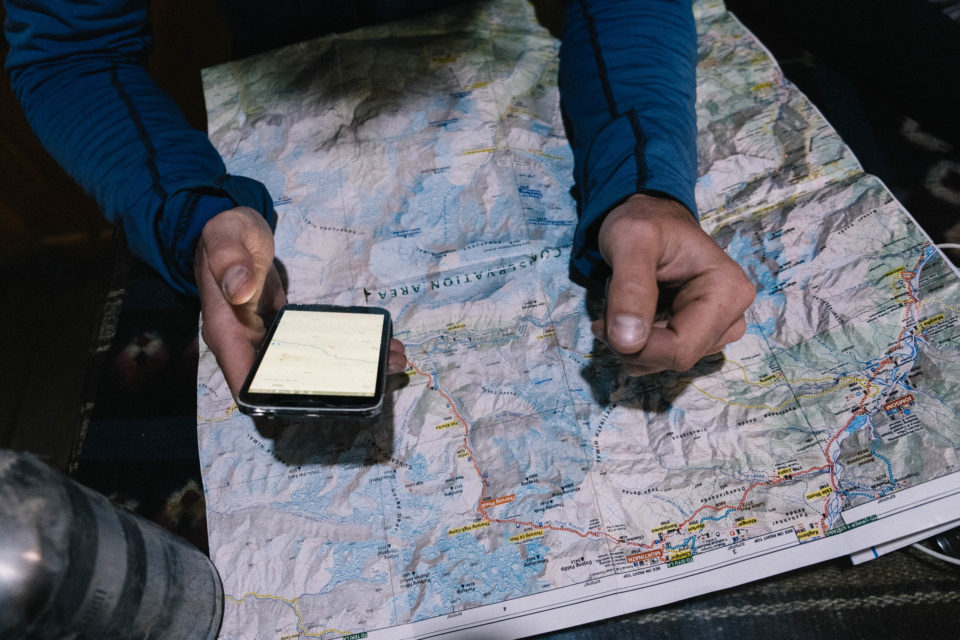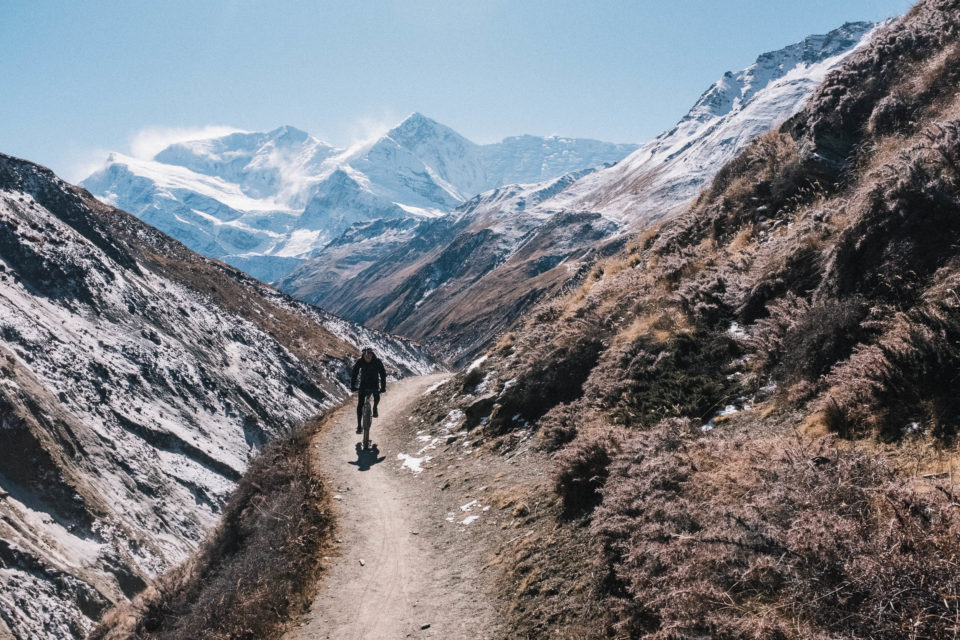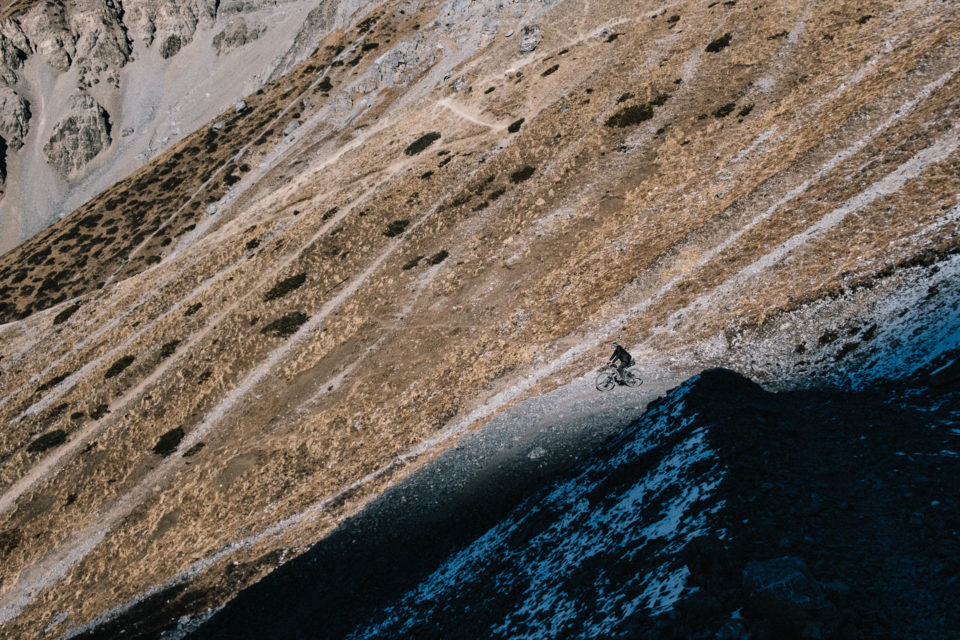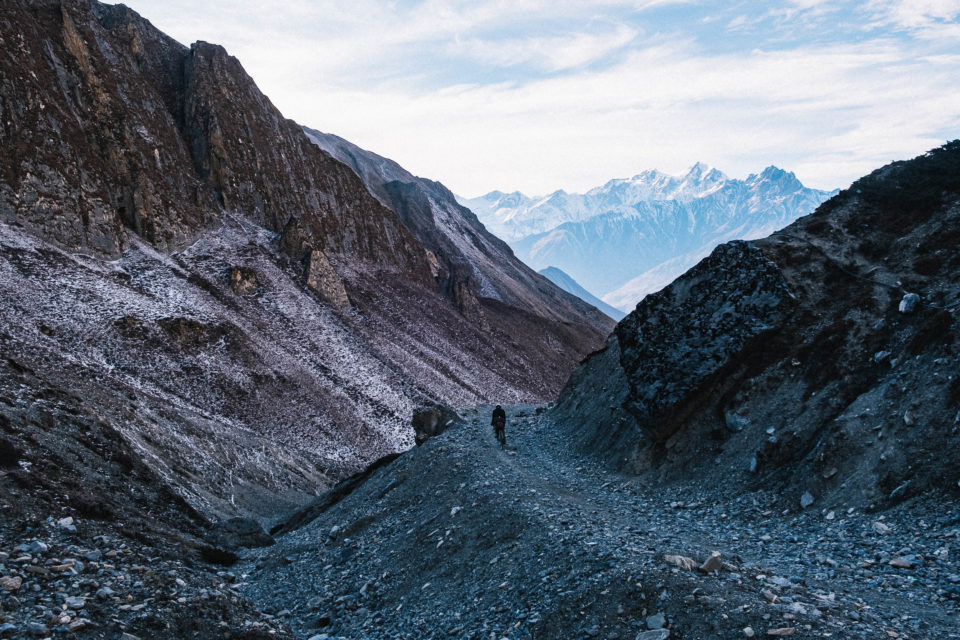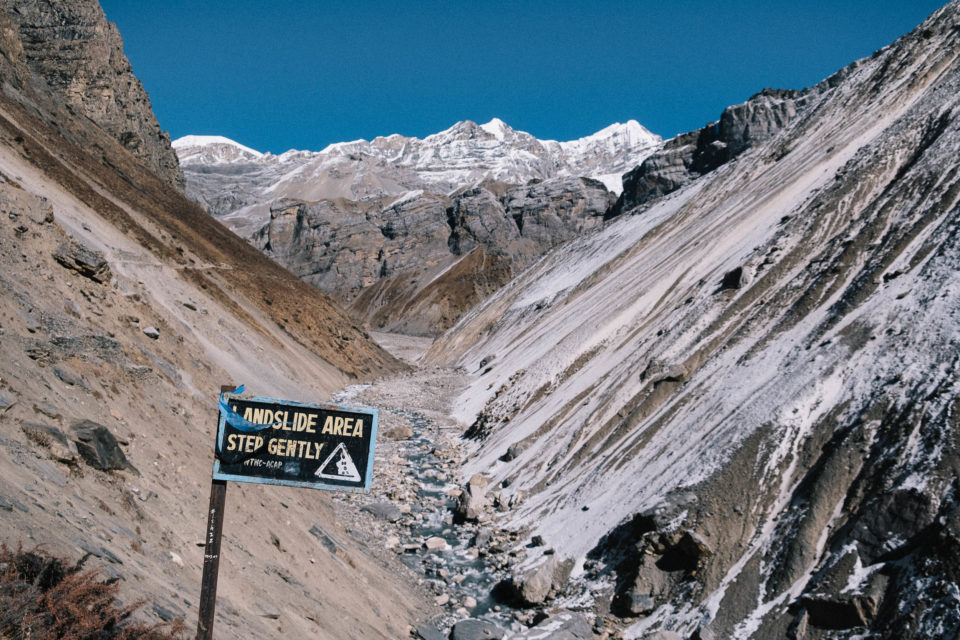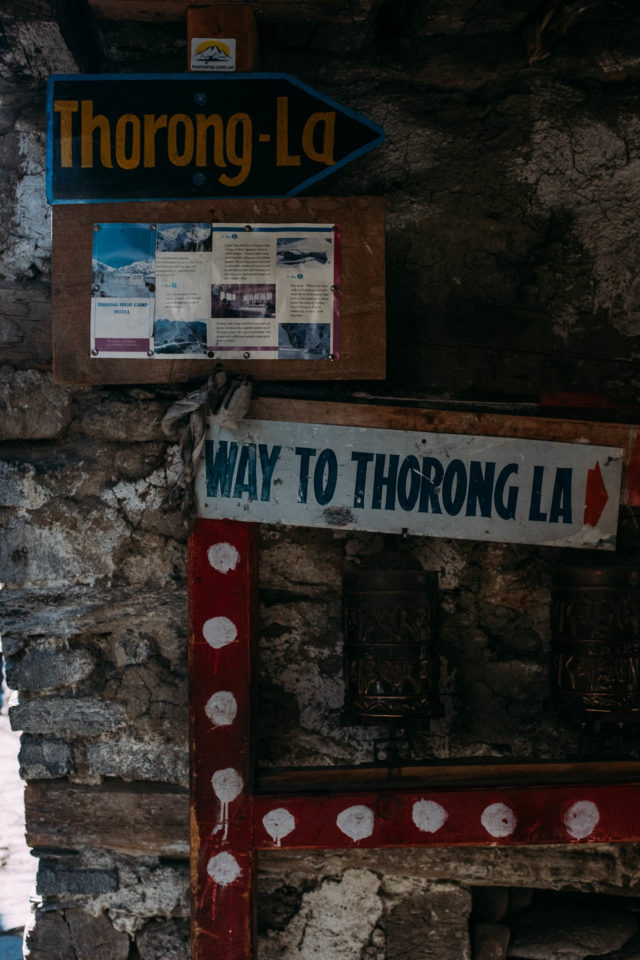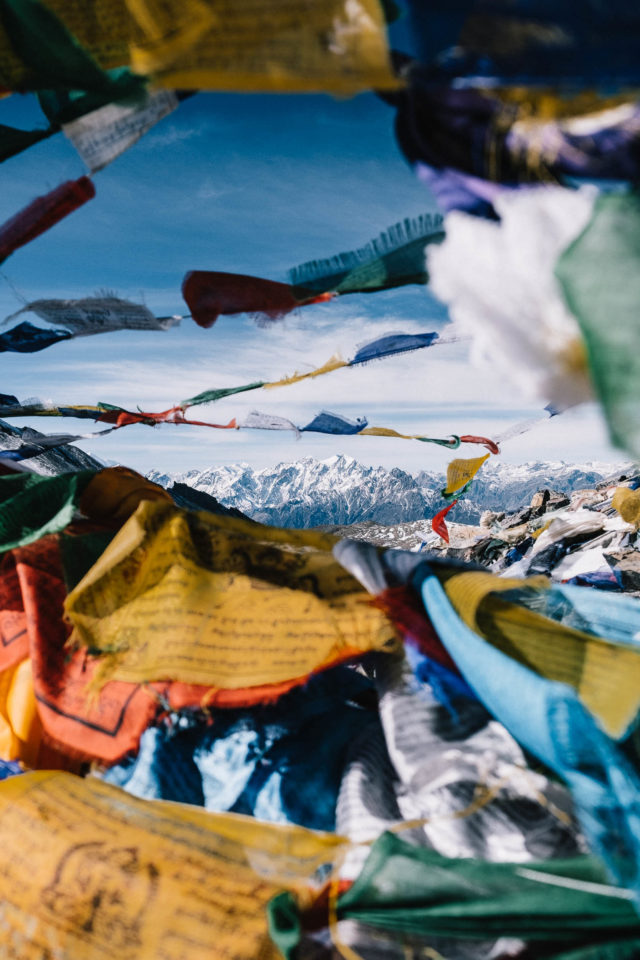Beginners Bikepacking The Annapurna Circuit, Nepal
Share This
As they ditched their racks and panniers in favor of bikepacking setups, Robin Patijn and Sabina Knezevic were increasingly drawn to more rugged and remote routes. In this story, they share their experiences and lessons learned while riding Nepal’s Annapurna Circuit with only the bare essentials…
Words and photos by Robin Patijn and Sabina Knezevic (@farawayistan)
“Haven’t you had enough after riding the Caucasus Crossing in Georgia?” our friend asked laughingly after we told him of our plan to cycle the Annapurna Circuit Trek (ACT). It’s one of the world’s most beautiful high-altitude hiking trails and winds through some of Nepal’s tallest mountains, with Annapurna I being the highest at a staggering 8,091 meters (26,545 feet). To his credit, it was completely out of our comfort zone, but we were inspired by what we’d glimpsed from other riders online.
But we had come pretty far since our first attempt at a bikepacking route in the Caucasus Mountains. That time, we’d set off on the worst roads and steepest climbs with a full-on traditional touring setup, and we were never able to complete the route. Gear choices aside, it also might have been a bit ambitious for our first proper bicycle tour ever.
When we started this trip without any prior experience, we didn’t think we’d be able to complete a crazy bikepacking journey, so we chose the “safe” option of a more traditional setup with panniers. We had numerous reasons for our decision to go with good ol’ panniers: better stability and easier packing, simple mounting and dismounting of the bags, to name a couple. Enough room to carry all that we needed and the ability to store stuff on top of the panniers. Besides, it looked like (almost) everyone else on a trip as long as ours was using panniers.
Hitting the road, we were absolutely happy with our choice. That is, right until the moment we had our first off-road climb with a gradient of 10+ percent. In that moment, we knew we had chosen the wrong setups. Incidentally, Sabina’s panniers broke on the Pamir Highway, so we were able to use the refund money to buy a frame bag and saddle bag—our first baby step towards bikepacking. On our way towards Nepal from India we got the idea stuck in our head that we simply had to cycle the ACT. Or at least to try. But we kept wondering, were we strong enough? Was it going to be too hard? Were our bikes suited to the terrain?
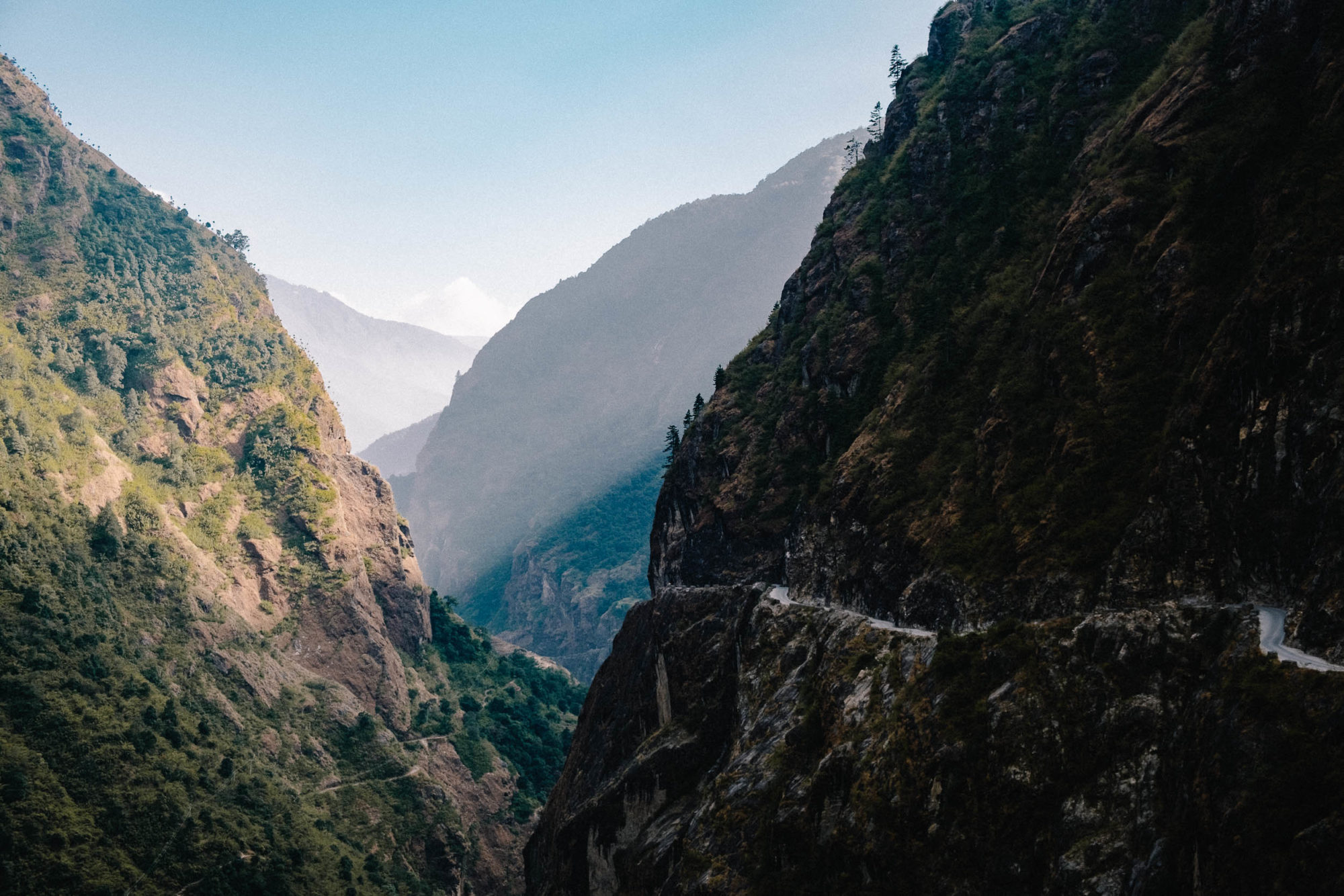
Thankfully, this time around we felt a lot more sure about ourselves. One thing we had learned from our Georgian adventure is that weight matters. We stripped our bikes to the bare minimum. Robin had a 14-liter saddle bag and Sabina a 7.5-liter frame bag. Somehow, we had to fit enough warm clothes in our bags for the freezing temperatures at higher altitude, including the highest point of the route, the famous Thorong La Pass at 5,416 meters (17,769 feet).
We had been riding with Ross and Paxton since Delhi and had managed to convince them that riding the ACT with us was a good idea. In Pokhara, we found two new friends who had the same crazy idea, Sam from Wales and Silas from Switzerland. With our brand new gang of six we were ready to take on this Himalayan adventure. Together with our friends we finally embarked on our first real trip with our new bikepacking setups. The total elevation gain of the entire circuit is more than 10,000 meters (32,810 ft) over just 380 kilometers (236 miles). That’s a lot of high-elevation riding and even more steep climbs.
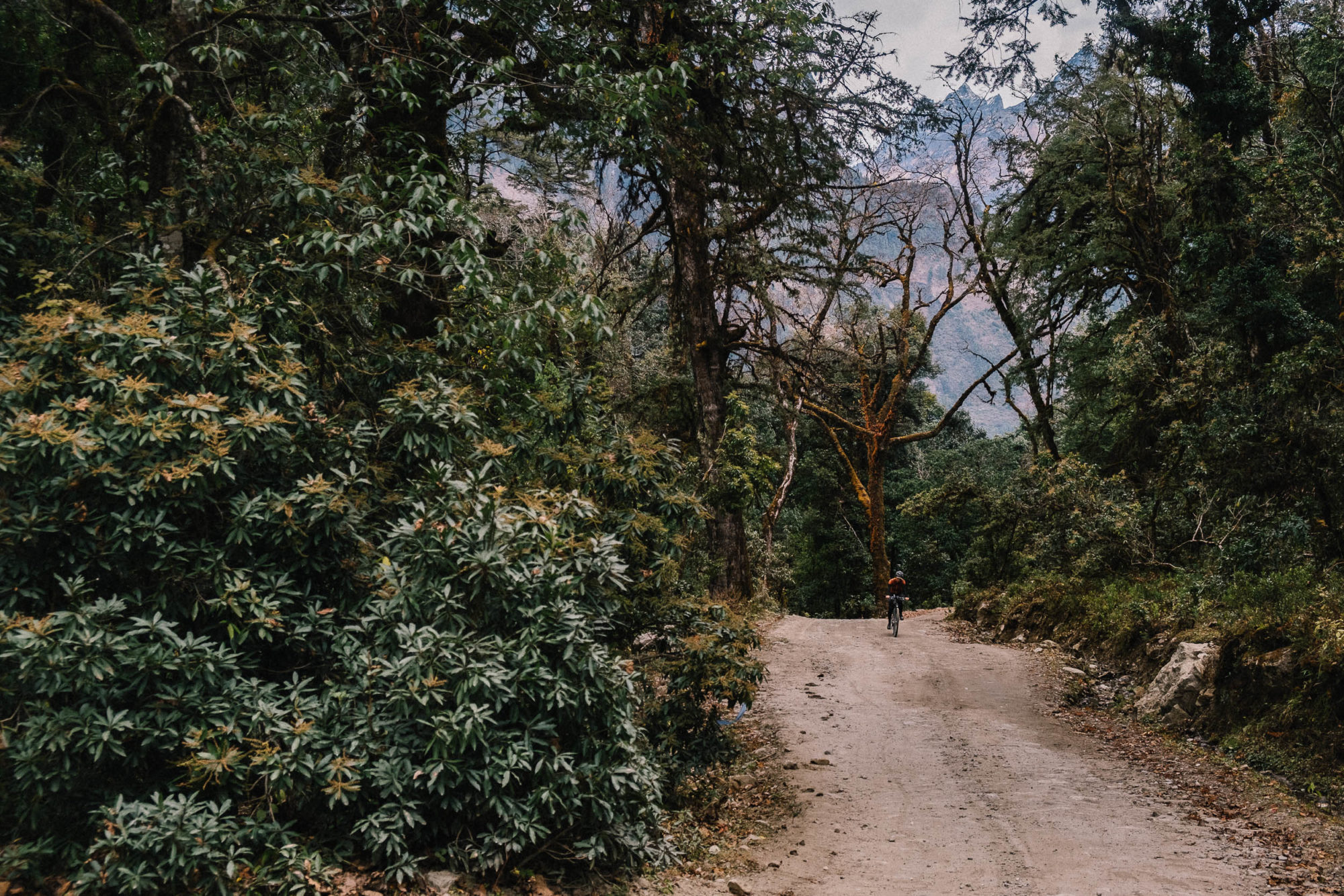
We left the main road after a couple of kilometers, riding towards Besisahar; the official starting point of the ACT. We rode through the fields and small villages in the lowlands and had our first taste of some pretty intense climbs on dirt roads. As we got higher we entered the subtropical jungle, where the road winds along massive cliffs. Every now and then we would pass areas of roadwork with big, loud generators and excavators. We had to carry our bikes over the construction sites and all the workers would start to giggle when we told them we were planning to cycle over the Thorong La pass.
Besisahar is the last town to stock up on food and snacks for a reasonable price. We bought a bunch of chocolate cookies, peanut butter, and some dried fruits. Prices on the circuit are sky-high and rise in tandem with the altitude—understandably so, since it’s not an easy task to get the goods up there.
We cycled mostly on the road that goes all the way to Manang. The road was a mix of gravel, mud, and some asphalt every now and then. It was going up all day, every day, which was pretty tough, but definitely doable, especially without loaded panniers packed full of too much gear. The road often clung against the winding rock face. Most of us had to push our bikes on the steepest parts, and even that was a strenuous task. Even motorbikes couldn’t ride everywhere. They too had to push their heavy bikes uphill.
Along the way we were rewarded with beautiful waterfalls, and once we got higher the environment started to change. The architecture changed and we saw the first wall with prayer wheels. Houses were made of stone and everyone seemed to be preparing for winter. Locals were repairing their homes and chopping wood. Nature also changed drastically. Broadleaf forests gave way to forests of pine. We could see the tree line and the massive boulders rising above it. We even got a glimpse of the mighty Manaslu, the eighth highest mountain in the world.
Just before Chame we passed another checkpoint. Here we could have our vital signs checked too. We were soon reaching the 3,000 meter mark, at which point we could really start to feel the effects of the altitude. Luckily all of our oxygen levels were superb, and so was everyone’s blood pressure. The doctor gave us the all clear to continue climbing, so we pressed on.
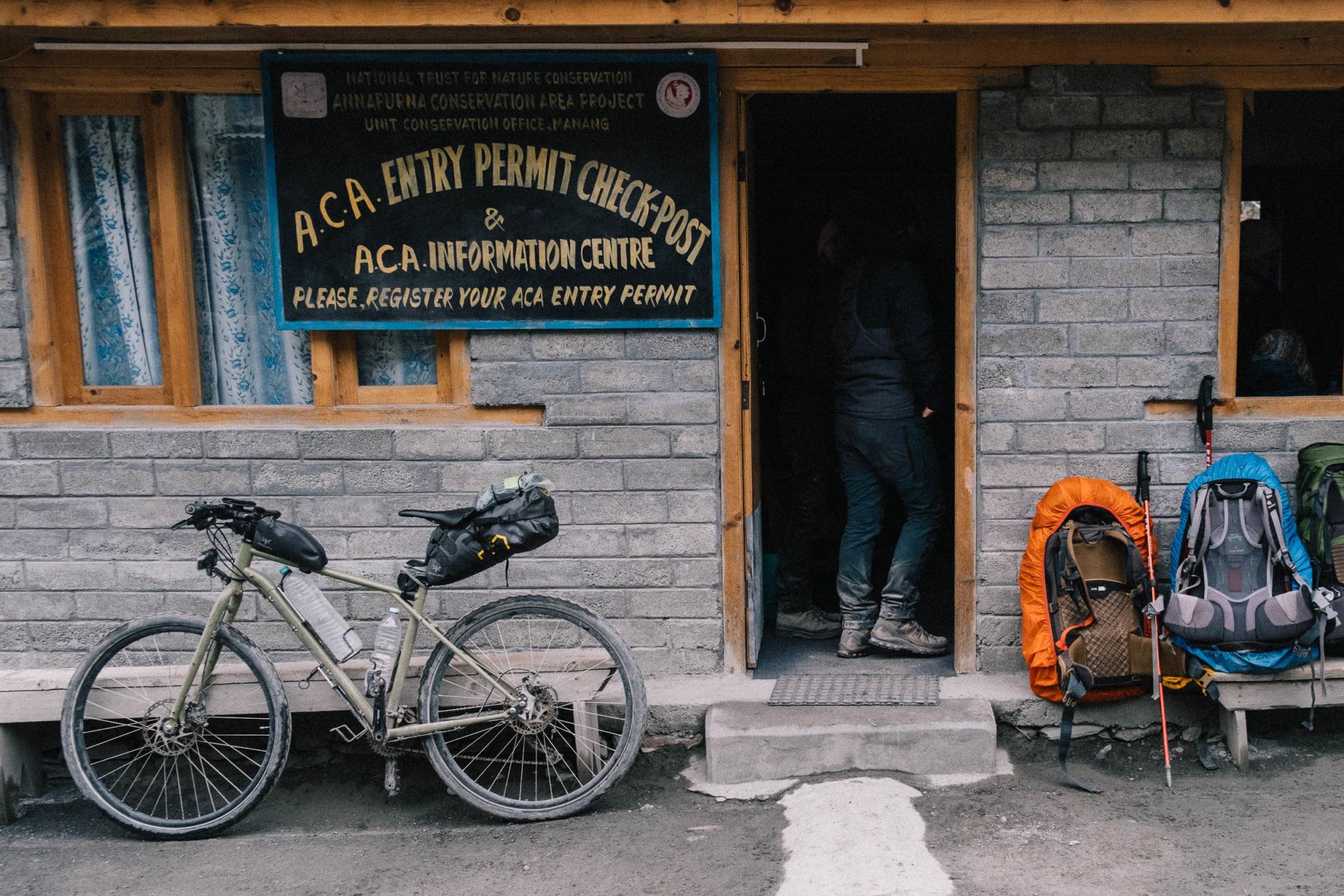
The road ends in Manang, which is about 20 kilometers before the pass. And just as Komoot had predicted, the last part to Manang was nearly flat. It got even better when we saw the first baked goods in the windows of the European-style bakeries in the small village. It felt like heaven. Chocolate croissants and fresh coffee right in the middle of the magnificent Himalayas. Prices were sky high too, but everyone was in for a treat, and it was worth every single rupee to us.
Manang was also the perfect base for an acclimatization hike. We hiked to Praken Gompa, at nearly 4,000 meters, to visit the Lama and receive a blessing to safely cross the Thorung La pass.
In the evenings, everyone would gather around the fireplace to play games and chat with other travelers. It was terribly cold at this altitude and this was the only source of heating. We would warm our hands with the stones on top of the stove. Showering had to be done in daytime, since the water pipes would freeze solid at night and didn’t defrost until noon. Nevertheless, it was a beautiful place to spend two days and recharge for the highest part of our trip.
We agreed to not climb more than 500 meters per day above the 3,500 meter line. With Manang being the end of the road, we had to carry our bikes over stairs and push up a seriously steep hill as we got started. From there, the region was only accessible by foot or bicycle. We could cycle most of the trails and we passed a lot of hikers. They were all in disbelief that we were going to cycle over the pass. They were also astonished by how little we carried, compared to their massive backpacks.
In Manang we met a group of mountain bikers, all on full-suspension bikes and with porters to carry their stuff. Hell, they even had someone who cleaned their bikes. We met them again in Yak Kharka, and it was pretty funny to see their cool, shiny bikes nicely lined up in comparison to our dirty and well-worn steel touring bikes dumped chaotically against the opposite wall.
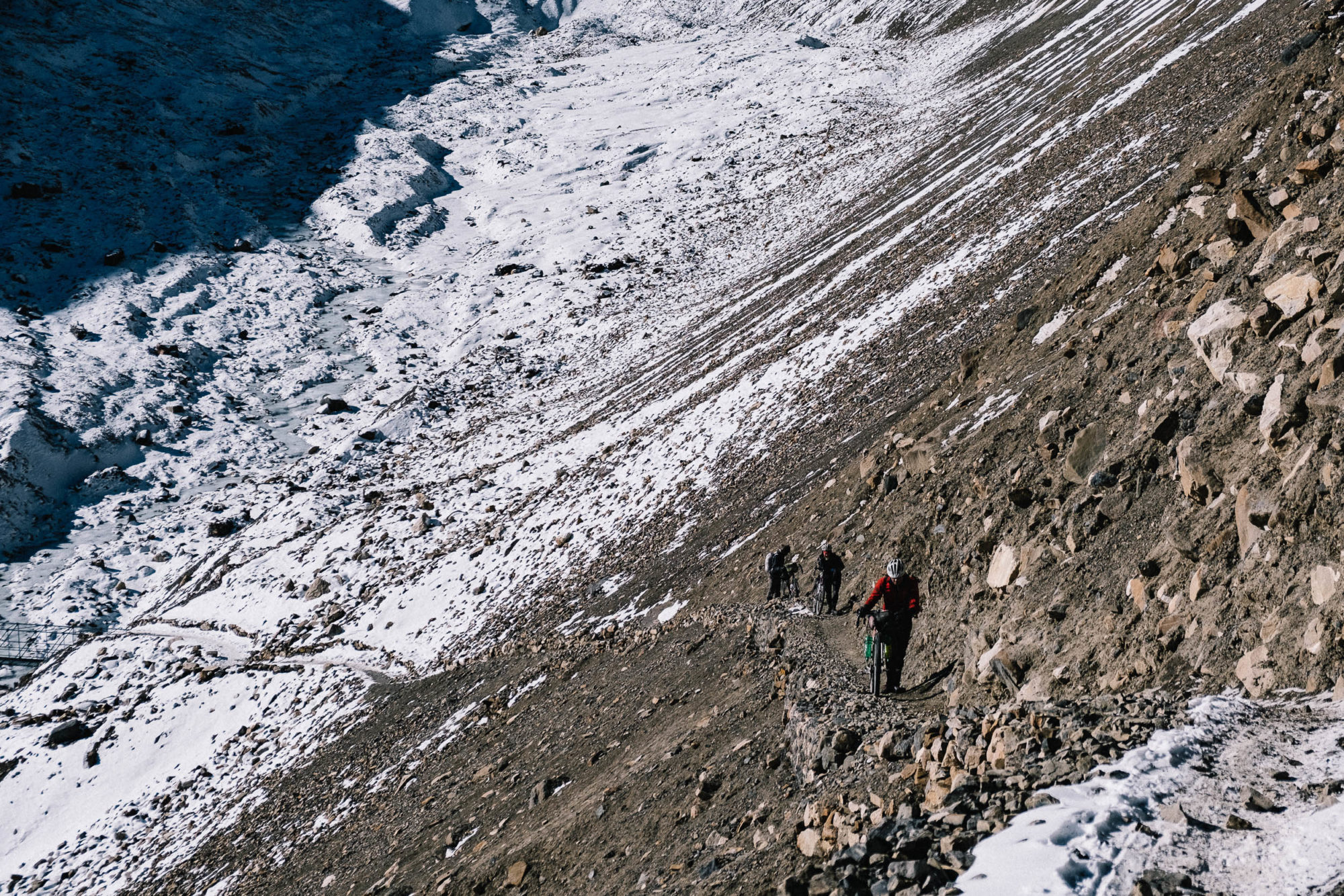
It was getting colder and colder, and some parts of the trail were already covered in ice. It was pretty tricky to walk (read: slide) over it with our loaded bicycles, but we all made it without landing on our butts. The rest of the track was roughly 30 percent cycling and 70 percent pushing. We had to pass an active but beautiful landslide area, where we absolutely couldn’t pause to soak things in. The altitude was affecting our breathing and it was pretty brutal to keep going without stopping. However, seeing the abyss beside us and all the loose stones above was more than enough motivation to push onwards.
In Thorung Phedi we unloaded most of the stuff from our bikes in the teahouse where we would spend the night. To make our journey over the pass the following day a bit easier, we pushed our bikes up as far as we could get them. The path is extremely steep from the very beginning, and we steadily worked our way up through a series of switchbacks. Every 10 steps we had to take a pause to catch our breath. We used this time to appreciate the unbelievably beautiful valley and its snow-capped peaks.

We made it about a kilometer past high camp and locked our bikes up for the night. The sun had set behind the mountains and our fingers and lips were turning blue on the hike back down to our tea house due to the extreme cold. At this altitude, it’s also better to sleep lower than you have been that day, so it functioned as our acclimatization hike, too.
At 6:00 AM the next morning, we packed our stuff and carried it back up to our bicycles, which were frozen solid at that point. The long push had begun. Despite how light our bikes felt when we set off from Pokhara, they felt anything but now.
There was one steep section, but the rest of the climb was thankfully quite gradual. This doesn’t mean that it was easy, since there was a lot of snow and breathing was next to impossible. Unbelievably, though, we still overtook some hikers who were clearly also struggling with the lack of oxygen in the thin air.
We had a major setback when we realized stuff had been stolen from our bikes during the night. Both our bib shorts, arm warmers, and some tools (even cookies!) were gone. It’s just stuff, but it was so demotivating at the time. We tried to focus on the beauty of the environment instead, which helped take our minds off our stolen goods. And so did getting our first glimpse of the prayer flags marking the top of the pass. The otherwise completely white landscape was suddenly filled with spectacularly bright colors from the hundreds of flags that were flapping in the wind.
With our bikes in one hand and holding hands with the other, we walked the last part together, both with tears of joy in our eyes. We actually made it. Thorong La, 5,416 meters high. Incredible. One of the highest mountain passes in the world, and we’d made it there on our bicycles! The feeling was surreal. After all the mandatory photos at the pass we started our descent in the shadows of the majestic mountains surrounding us. From the top of the pass we still had a long way back to Pokhara. The days riding down were a mix of tiredness, gratification, and thankfulness.
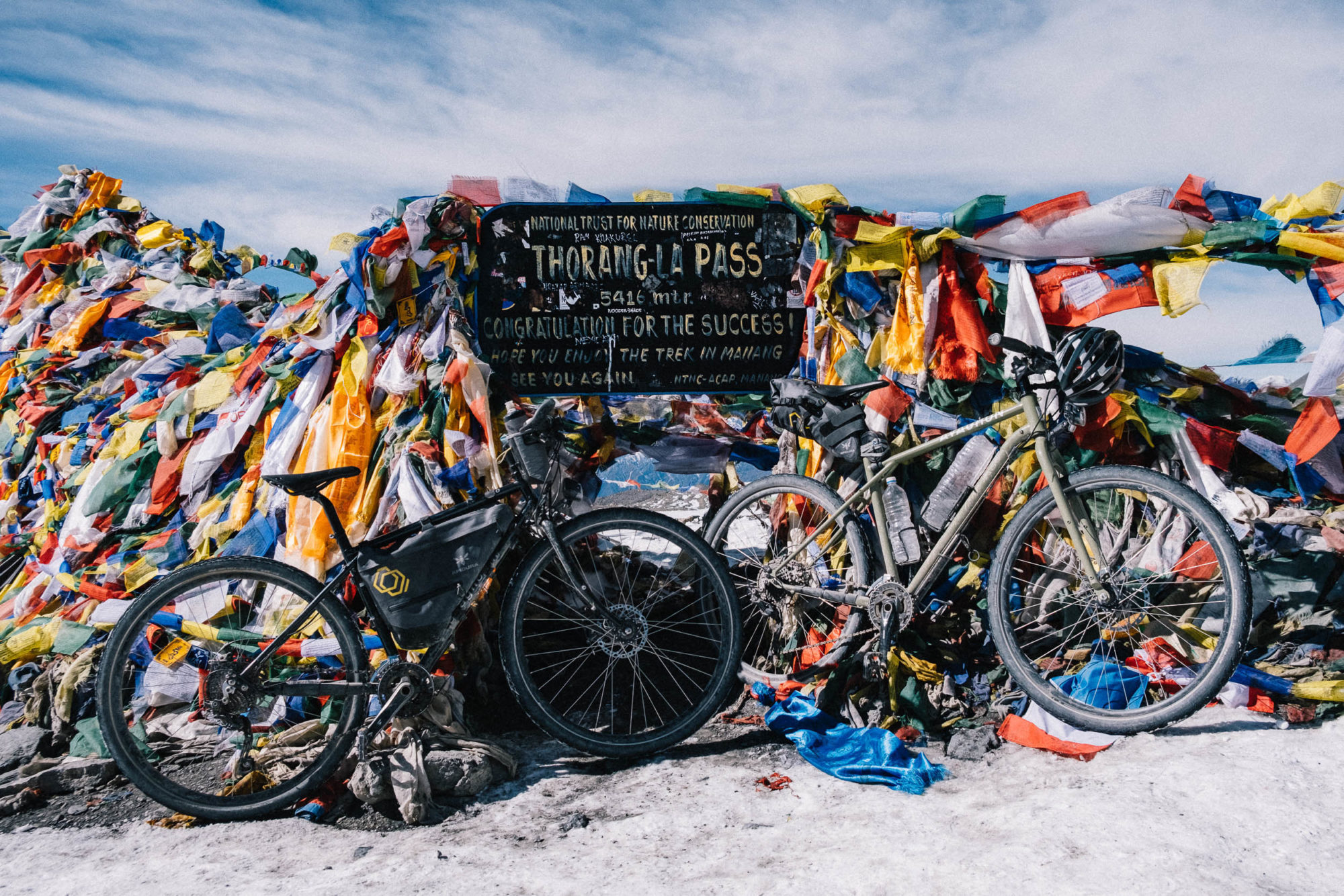
We had learned that we don’t need the perfect bicycle or to be in tip-top athletic condition to do these amazing things. A strong will, a bit of courage, and some good friends who helped us got us further than we could ever have dreamed of. Our steel touring bikes were far from ideal for this route, but that hadn’t stopped us. We didn’t even have mountain bike tires. Our brakes were squeaking like crazy and you could hear the dirt grinding in our chains. After two weeks of gorgeous trails, muddy tracks, and cobbled roads, our bicycles were in desperate need of a deep clean.
Cycling the Annapurna Circuit Trek route made it clear to us that this kind of riding is exactly what we want to be doing. Facing nature’s challenges head on. Pushing our bodies to their limits. Immersing ourselves in vast landscapes with unique cultures and breathtaking scenery. We’ll keep riding with what we have for now, but look forward to transitioning to a full-on bikepacking setup once our budget allows. Kyrgyzstan, we’re coming for you next year…
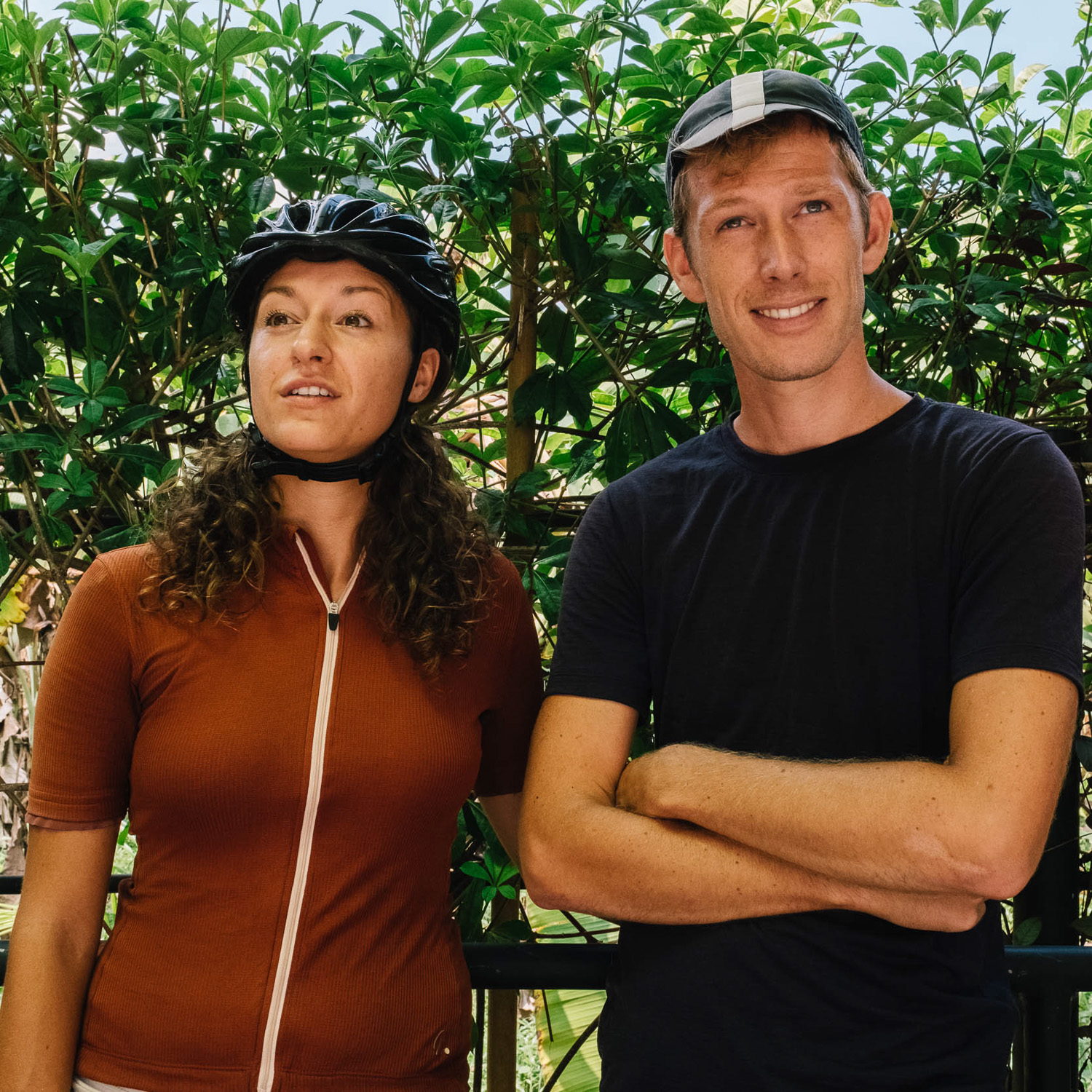
About Robin Patijn and Sabina Knezevic
Robin Patijn and Sabina Knezevic aim to show people the world from the perspective of their handlebars. They share a passion for cycling, photography, and travel to tell unique stories about their adventures all over the world. Follow their journey on Instagram @farawayistan or at Farawayistan.com.
Please keep the conversation civil, constructive, and inclusive, or your comment will be removed.













